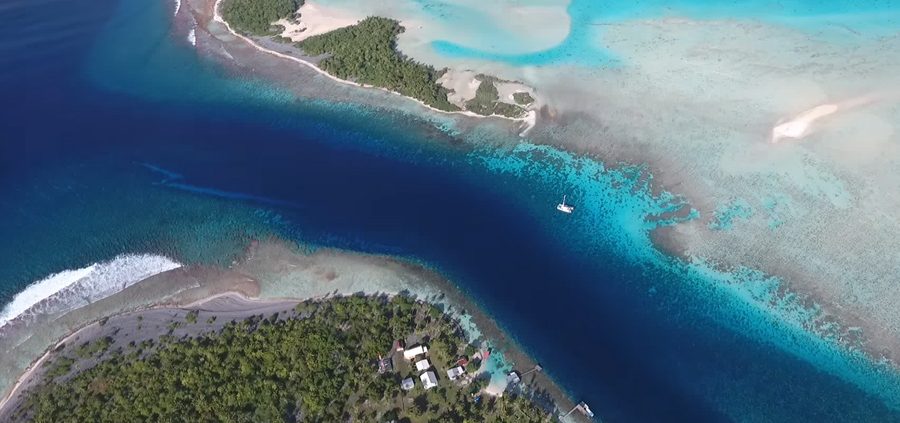The Tuamotu archipelago
The Tuamotu archipelago located some 300 kms north-east of Tahiti is made up of 76 atolls of which hardly half are inhabited. These so-called low islands are ancient craters which have disappeared under the influence of erosion and whose edges, colonized by corals, are nothing but outcrops of white sand, strewn with shells and planted with coconut palms, which the Polynesians call “motu”.
The climate in Tuamotu is different from that of the high islands of Tahiti and the Leeward Islands. The warm and humid season, from December to February, is much more temperate here with a refreshing trade wind and reduced rainfall (usually at night), causing difficulties in supplying fresh water. The temperature of the air varies from 26 ° C (in July) to 29 ° C (in February); That of the ocean varies from 25 to 29 ° c.
In the Tuamotu, the scenery is total, far from any urban agitation. Life on these atolls is simple and quiet. The activity of the native ones, the Paumotus, is limited to copra, fishing and for some years to the culture of mother-of-pearl (Pinctada margaritifera). Grafted, it will give the famous black pearl, endemic Tuamotu. The inland lagoon, in fact, is a protected place, ideal for establishing pearl farms and fish parks …
Each atoll offers landscapes of wild beauty. Seen from the sky, they appear to be white rings on the indigo blue of the Pacific Ocean. The motus are covered with coconut groves interspersed with beautiful beaches and are separated from one another by small channels or “hoa”. The lagoons decline their waters from jade green to turquoise blue, turning purple. They communicate with the ocean by numerous “hoa” but especially by passes which are the privileged place to go to meet the underwater fauna.
Rangiroa was the most famous Paumotu atoll, especially at the level of its diving spots. But not far from Rangiroa another atoll more and more talk about him: Fakarava and its surroundings! Fakarava has the largest pass of Polynesia and is surrounded by atolls offering the most beautiful Polynesian diving spots.


